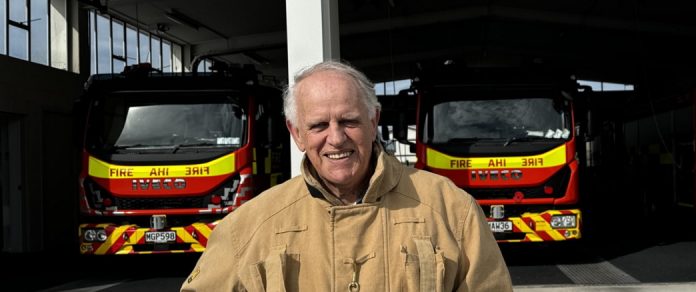As the Ashburton Volunteer Fire Brigade approaches its 150th anniversary, chief Alan Burgess is looking back on 35 years as chief, and 55 years as a member.
‘‘It doesn’t feel like 35 years, it doesn’t feel like 55 years,’’ Burgess said.
Alongside Superintendent Thomas Barber, who was in the top job from 1900 to 1935, Burgess is the longest serving chief of the brigade.
It’s a role he may be calling time on soon, but he is not ready to say anything on that just now.
‘‘There will be some changes coming up somewhere along the line,’’ Burgess said.
‘‘My current plan at the moment is not to give it (the brigade) away entirely.’’
Burgess has a proud legacy, one where callouts have grown to more than 400 per year.
Despite the ongoing challenge in sourcing volunteers who are available during work hours, the brigade is going strong. There are 39 members, and another two in the process of being recruited.
‘‘That will give us a full house. We are pretty much bursting at the seams,’’ Burgess said.
Burgess’s legacy is also no doubt in lives, buildings and property saved under his leadership.
One of his callouts as a new member was to a fatal house fire.
Such events hit home the value of being able to save people from situations where they may be trapped, whether it be a burning building or a car after a car crash.
‘‘There has to be a level of satisfaction you have managed to achieve those things, and you have got people out who are thankfully still alive,’’ Burgess said.
‘‘So all the training that has been put in place, and that team work thing, that becomes pretty self evident,’’ he said.
Burgess said the brigade had come a long way during his years there. One of the biggest changes had been in firefighting uniforms.
‘‘I do remember some woollen trousers we were issued, and an old woollen bunker coat,’’ he said.
‘‘They were quite good because if they got wet, at least you stayed reasonably warm.’’
Helmets in those days were made of cork, and in the late 1970s plastic.
‘‘If they got too hot, they melted,’’ he said.
Also not providing much protection from heat was hyperlon trousers, in the 1980s.
‘‘They weren’t great.’’
He is pleased to report that today uniforms are much better. There are two types, one for fighting structure fires and one for fighting vegetation fires. Advancements in technology have ensured better materials, for example, the structure fire uniform has composite fabrics in the outer shell and lining, around a middle layer of GORE-TEX.
Other changes over the years include in standards and training.
The brigade has a claim to national fame, being the birthplace of Fire and Emergency New Zealand in 2017, when the organisation was launched nationally in Ashburton.




